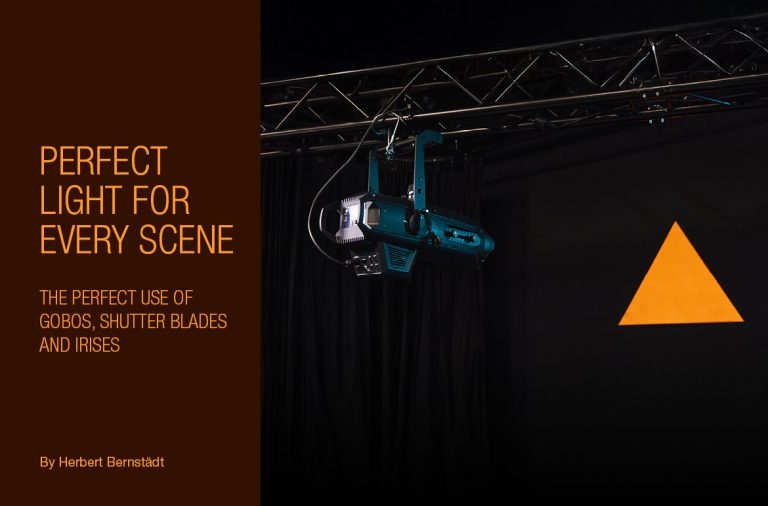Sondcheck Test: PALMER Acoustic Pocket PREAMP – The Acoustic Ace
The Acoustic Pocket Preamp processes acoustic guitar signals and is a combined mixer, feedback-killer and DI box – a special tool for guitarists who prefer not to leave their sound to chance, or better said, in the hands of the sound man.
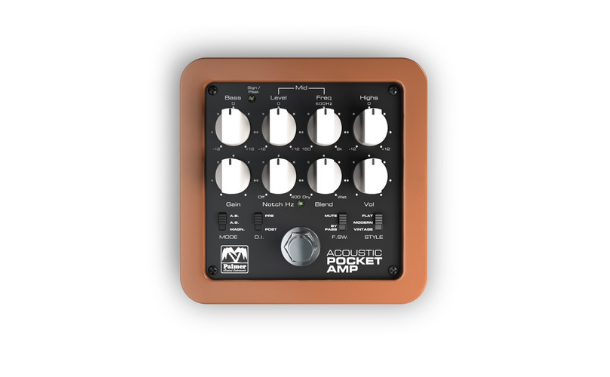
Acoustic guitar pickups continue to be a hot topic, because their amplification still requires tonal compromises. However, there are always manufacturers who claim to have developed a new magic box that finally converts a pickup sound into the sound of a mic’d guitar, but as yet, none of these devices have really struck a chord.
There are, however, many resources available to enhance the sound and which come closer to achieving the goal of a natural sound. To do this, the frequency response must be individually tailored to the guitar type, since every instrument differs in its strengths and weaknesses. Here, presets alone generally have little purpose. Another problem with acoustic instruments is feedback, which, for acoustic guitars, is particularly noticeable in the bass end. Here, everything can sound fantastic but for one single note on the
low E or A string that continually resonates into an intolerable drone. The Acoustic Pocket Amp from Palmer aims to solve these and other problems, and also boasts additional features such as sound simulations, a headphone amplifier and integrated signal-splitter.
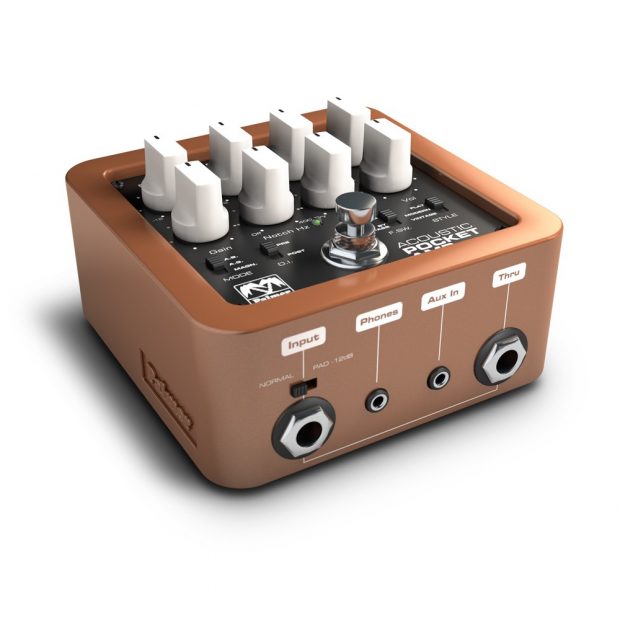
Versatile
The preamp is suitable for all instruments with active or passive pickups. It can also be used with banjos, violins, cellos, basses and much more, making it a flexible all-rounder, ready for everything. For particularly hot pickups there is a pad switch that attenuates the pickup signal by 12 dB. The XLR output renders an additional DI box unnecessary, since the Acoustic Pocket Amp can be connected directly to a mixing console. It is equipped with a ground lift switch to eliminate unwanted ground loops. Thanks to the input limiter, input distortion is not an issue. The level can be fine-tuned via the gain control. The rugged housing makes the preamp robust and able to easily withstand the rigours of the road. The device is powered by a 9-volt power supply or a battery. The guitar signal can be split and sent to the mixer and to an additional guitar amp, for example. There is also an output socket for the unprocessed signal, as is sometimes desirable for live recordings. The insert jack enables compressors or other effects to be easily patched in.
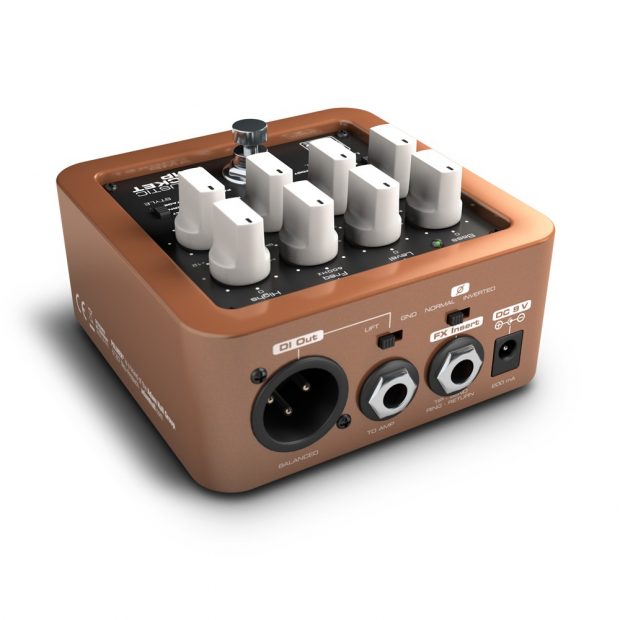
Great sound right out of the box
First impressions confirm that from the outset, the Acoustic Pocket Amp really does make the sound more pleasing to the ear. The device is very simple to operate, and with some basic studio knowledge, rapidly dialled-in. The three-band equaliser has been designed specifically for acoustic instruments, made evident by the middle control, whose operating range of between 150 Hz and 8 kHz is where the most common causes of a piercing piezo sound are located. Precision work, absent from many mixers with a simple mid control. Here, adjustments can be made as required for the guitar, so that the performer can now quickly find the annoying frequencies during a show. A notch filter working between 20 and 400 Hz helps to suppress any feedback. Because the selected frequency is reduced at an extremely narrow bandwidth, there is no impact on the overall sound. The blend control adjusts the ratio of input signal to processed signal, so that it does not sound too processed. However, with subtle use of the settings, a superb sound with a fully processed signal is also possible. In addition to classic sound settings, the preamp has even more under the hood. The style switch, offering various basic sounds, is particularly interesting: Modern has a strikingly present character, while vintage sounds rather warm and rounded. In the flat position, the signal remains untouched. it is definitely worth experimenting with different guitar types, since the most pleasing sound is always dependent on the construction of the instrument and the characteristics of the pickup. When testing with a Gibson J-200 equipped with a Fishman Matrix Infinity, the vintage preset in particular does a sterling job, lending the guitar not only warmth, but also a little more depth. The notch filter functions perfectly and under test conditions, successfully suppresses the feedback that continually developed upon pressing the E string against the third fret. The device is also really impressive in practice.
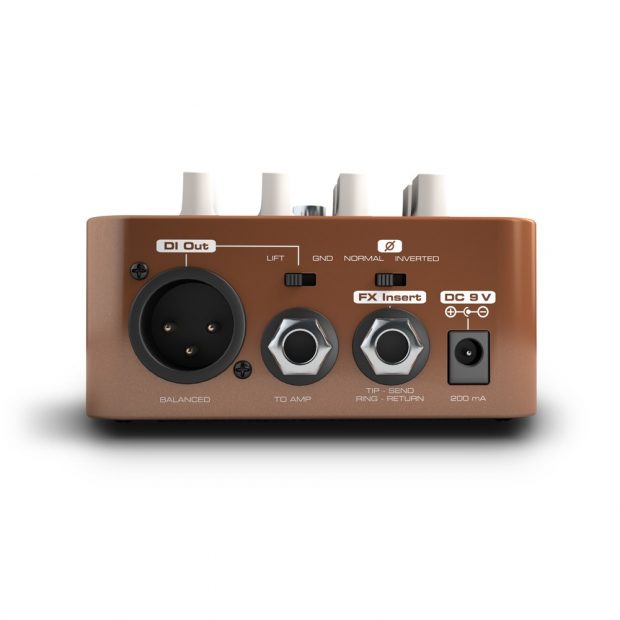
Everything covered
The DI signal is switchable and can be taken either before or after the sound settings, enabling use as a pure DI box. The mode switch provides presets for magnetic pickups, a bass cut setting for violins, for preventing body noise, as well as a setting for acoustic and double bass, for when reproduction of bass frequencies without low cut is needed. The Palmer Acoustic Pocket Preamp is like a Swiss Army knife for musicians with acoustic instruments, not just because it can significantly enhance the sound, but also because it features many useful tools such as feedback suppression, a DI output and an effects insert. Its compact and rugged construction should mean that the device will soon be found on many pedal boards.
Author: Gerrit Hoss (Soundcheck.de)
More information:
soundcheck.de
palmer-germany.com
palmer-germany.com/pocketamp
adamhall.com




